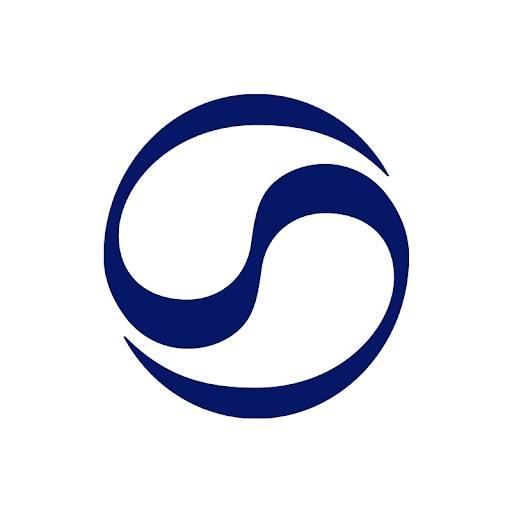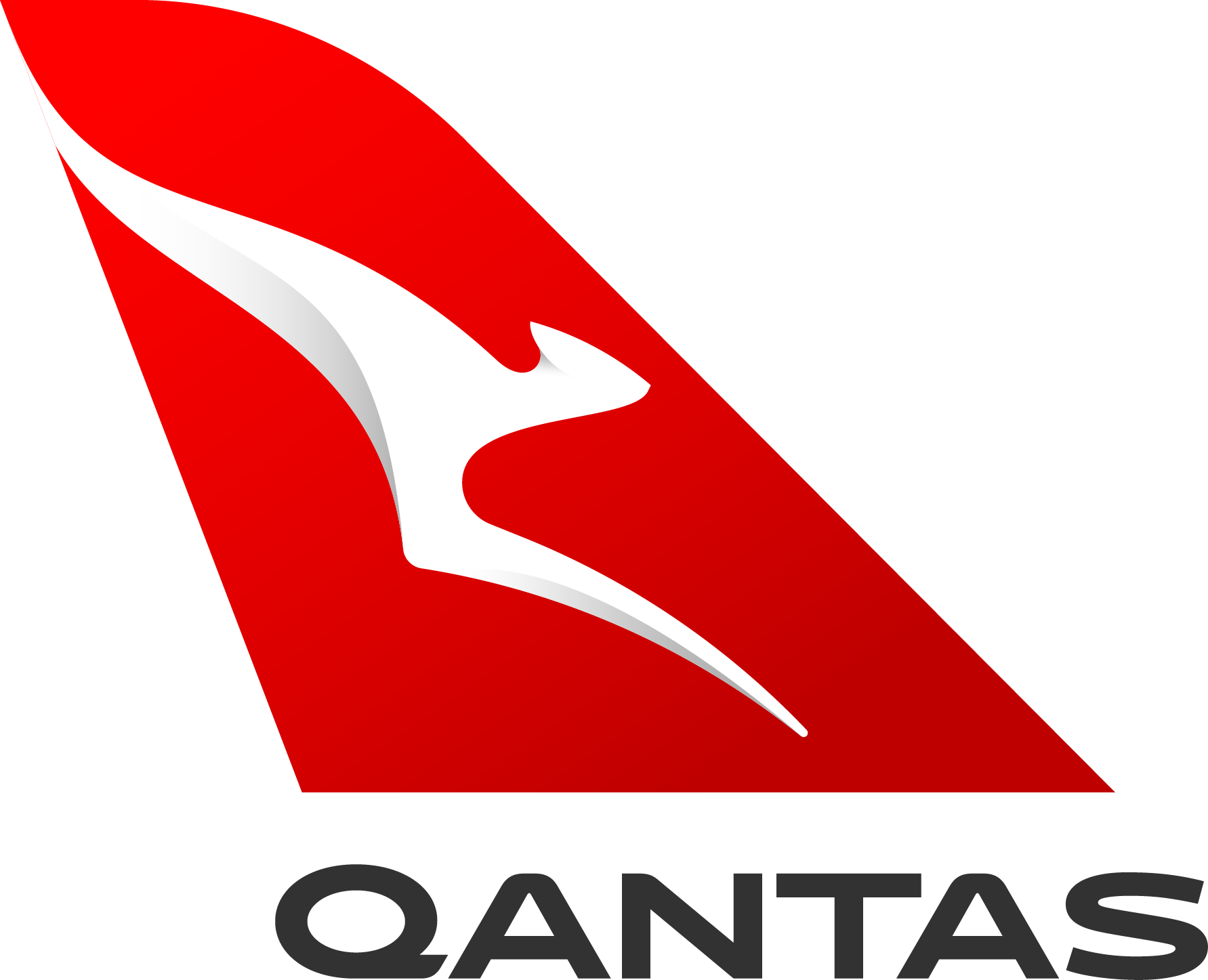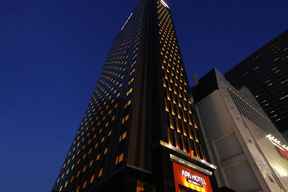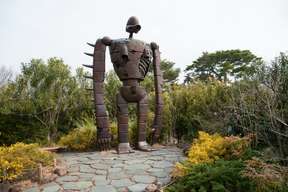
Flight From Tawau (TWU) to Tokyo (HND)
Flight Information from Tawau (TWU) to Tokyo (HND)
Cheapest round-trip flight
Shortest flight time
19 hr(s), 5 mins
Direct Airline from Tawau to Tokyo
Exclusive for new users—register today!
Code:JOMJALAN
About Tokyo
Tawau to Tokyo Flights: Your Complete Guide to Traveling Between Malaysia and Japan
Planning a journey from the coastal town of Tawau in Malaysia to the bustling metropolis of Tokyo, Japan? This comprehensive guide provides everything you need to know about flight options, airport information, and travel tips to make your journey as smooth as possible. Whether you're traveling for business or leisure, understanding your flight options and planning ahead will help you enjoy a stress-free journey to one of Asia's most exciting destinations.
Direct Flights
No direct flight available.
Layover Flights
Route: Tawau (Malaysia) → Kuala Lumpur (Malaysia) → Manila (Philippines) → Tokyo (Japan)
Airlines: Malaysia Airlines, Philippine Airlines
Total Flight Duration: 18h 25m
Aircraft: Boeing 737, Airbus A321
Layovers:
- Kuala Lumpur International Airport (KUL), Kuala Lumpur, Malaysia layover for 5h 10m (overnight)
- Ninoy Aquino International Airport (MNL), Manila, Philippines layover for 1h 55m
Route: Tawau (Malaysia) → Kuala Lumpur (Malaysia) → Osaka (Japan) → Tokyo (Japan)
Airlines: Malaysia Airlines, JAL
Total Flight Duration: 16h 25m
Aircraft: Boeing 737, Airbus A330, Boeing 787
Layovers:
- Kuala Lumpur International Airport (KUL), Kuala Lumpur, Malaysia layover for 1h 20m
- Osaka Itami Airport (ITM), Osaka, Japan layover for 4h 45m (overnight)
Route: Tawau (Malaysia) → Kuala Lumpur (Malaysia) → Osaka (Japan) → Tokyo (Japan)
Airlines: Malaysia Airlines, JAL
Total Flight Duration: 20h 55m
Aircraft: Boeing 737, Airbus A330, Boeing 737
Layovers:
- Kuala Lumpur International Airport (KUL), Kuala Lumpur, Malaysia layover for 1h 20m
- Kansai International Airport (KIX), Osaka, Japan layover for 9h 5m (overnight)
Information about schedule and airline subject to change based on airline policy. Please check regularly at Traveloka App.
About Tawau Airport - Tawau
Location
Tawau Airport is located approximately 30 kilometers north of Tawau city center in Sabah, Malaysia. The airport serves as an important gateway for travelers in eastern Sabah, providing domestic and international connections. Situated amidst lush greenery typical of Borneo, the airport offers convenient access to Tawau city and nearby destinations such as the Tawau Hills Park and the coastal areas.
Airport Terminal
Tawau Airport features a modern single-terminal building that handles both arrivals and departures efficiently. The compact size of the terminal means short walking distances between check-in counters, security checkpoints, and gates. The terminal was renovated in recent years to improve passenger comfort and operational efficiency, offering a clean and functional space for travelers. Despite its modest size, the terminal provides all essential services needed for a comfortable departure or arrival experience.
Transport to Airport
Several transportation options are available for reaching Tawau Airport:
- Taxi: Taxis are readily available from Tawau city center to the airport, with the journey taking approximately 45 minutes depending on traffic conditions.
- Airport Shuttle Bus: Scheduled shuttle services operate between major hotels and the airport, offering a cost-effective alternative to taxis.
- Private Car: Many travelers opt for private car arrangements, either self-driving or with a hired driver. Parking facilities are available at the airport for those who prefer to drive themselves.
- Ride-hailing Services: Various ride-hailing platforms operate in Tawau, providing another convenient option for airport transfers.
It's advisable to allow extra time for your journey to the airport, especially during peak hours or adverse weather conditions.
Facilities
Tawau Airport offers a range of essential facilities to ensure passenger comfort:
- Food and Beverage: Several cafes and food stalls offering local and international cuisine.
- Retail Options: Duty-free shopping for international departures, along with newsstands and souvenir shops.
- ATMs and Currency Exchange: Basic banking services are available within the terminal.
- Wi-Fi: Complimentary wireless internet access throughout the terminal.
- Prayer Rooms: Designated prayer spaces for Muslim travelers.
- Public Restrooms: Clean restroom facilities, including accessible options for passengers with reduced mobility.
- Information Desk: Staffed service points to assist travelers with queries.
- Basic Medical Services: First aid facilities for emergency situations.
While not as extensive as larger international airports, Tawau Airport provides all the necessary amenities for a comfortable pre-flight experience.
About Haneda International Airport - Tokyo
Location
Haneda International Airport is located approximately 14 kilometers south of central Tokyo in the Ota district. As one of Tokyo's two major international airports (the other being Narita), Haneda is significantly closer to the city center, making it particularly convenient for travelers. Its strategic location provides excellent access to Tokyo's central business districts, popular tourist areas, and transportation hubs.
Airport Terminal
Haneda International Airport boasts three passenger terminals:
- Terminal 1: Primarily serves domestic flights operated by Japan Airlines and its affiliates.
- Terminal 2: Mainly handles domestic flights by All Nippon Airways (ANA) and its partners.
- International Terminal (Terminal 3): Dedicated to international flights from various airlines around the world.
Each terminal features modern architecture, efficient design, and comprehensive facilities. The terminals are interconnected by free shuttle buses and an automated transit system, allowing for easy transfers between terminals. The airport's layout is intuitive, with clear signage in multiple languages to assist international travelers.
Transport From Airport
Haneda Airport offers exceptional connectivity to central Tokyo and beyond:
- Tokyo Monorail: Connects directly to Hamamatsucho Station in central Tokyo, with trains departing every 10 minutes. The journey takes approximately 15-20 minutes.
- Keikyu Line: Provides direct access to central Tokyo locations including Shinagawa, with connections to the extensive JR and Tokyo Metro networks. Travel time to Shinagawa is about 15 minutes.
- Limousine Buses: Operate regular routes to major hotels, train stations, and city districts throughout Tokyo and neighboring prefectures.
- Taxis: Available at designated stands outside each terminal, offering door-to-door service to any destination in the metropolitan area. While convenient, this is typically the most expensive option.
- Car Rental: Several major car rental companies operate counters at the airport for travelers who prefer to drive themselves.
- Shared Shuttle Services: Cost-effective options that can be pre-booked to transport passengers to specific destinations.
The efficient transport links make Haneda Airport particularly popular among business travelers and tourists alike, with most central Tokyo destinations reachable within 30 minutes.
Facilities
Haneda International Airport is renowned for its exceptional facilities and services:
- Dining Options: An impressive array of restaurants, cafes, and food courts offering everything from quick snacks to fine dining experiences. Many outlets showcase authentic Japanese cuisine alongside international options.
- Shopping: Extensive retail spaces featuring luxury brands, duty-free shops, souvenir stores, and convenience outlets. The airport is known for its excellent shopping opportunities.
- Lounges: Premium lounges operated by airlines and independent providers, offering comfortable spaces for eligible passengers.
- Entertainment: Various entertainment facilities including observation decks, aviation museums, interactive displays, and cultural exhibitions.
- Wellness Services: Spa facilities, massage services, shower rooms, and relaxation areas for rejuvenation during layovers.
- Business Facilities: Meeting rooms, business centers, and workspaces equipped with necessary technology for business travelers.
- Family-Friendly Amenities: Dedicated play areas for children, nursing rooms, and family-friendly restrooms.
- Technology: High-speed free Wi-Fi throughout the airport, charging stations, and digital information kiosks.
- Medical Services: Clinics and pharmacies providing healthcare support to travelers.
- Accommodation: Hotels connected to or near the terminals for convenient overnight stays during layovers.
Haneda Airport consistently ranks among the world's best airports for cleanliness, efficiency, and passenger experience, making it a pleasant point of entry to Japan.
FAQ Tawau to Tokyo Flight
- Question: What is the best time of year to travel from Tawau to Tokyo?
Answer: The ideal times to visit Tokyo are during spring (March to May) for cherry blossoms and autumn (September to November) for colorful foliage. These seasons offer pleasant temperatures and stunning natural beauty. Summer (June to August) can be hot and humid with occasional rainfall, while winter (December to February) is cold but offers fewer crowds and winter illuminations. Consider booking your Tawau to Tokyo flights well in advance if traveling during cherry blossom season as this is peak tourist time. - Question: How much does a typical flight from Tawau to Tokyo cost?
Answer: Flight prices from Tawau to Tokyo generally range from RM2,300 to RM3,500 for round-trip economy class tickets, depending on the season, how far in advance you book, and the specific route. One-way tickets typically start around RM1,260. Peak seasons like cherry blossom viewing (March-April) and autumn foliage (October-November) tend to have higher prices, while January-February (excluding Chinese New Year) and June (rainy season) often offer better deals. Traveloka frequently offers promotions that can help reduce these costs. - Question: What are the baggage allowances for flights from Tawau to Tokyo?
Answer: Baggage allowances vary by airline and fare class. Typically, for economy class on Malaysia Airlines, passengers are allowed 30kg of checked baggage and 7kg of cabin baggage. JAL usually permits 23kg for checked baggage in economy. Philippine Airlines generally allows 20-23kg depending on the fare type. It's essential to check the specific allowance for your booking with Traveloka, as policies can change and may differ for multi-airline journeys. Additional baggage can be purchased in advance at lower rates than airport fees. - Question: Do I need a visa to travel from Malaysia to Japan?
Answer: Yes, Malaysian citizens require a visa to enter Japan. The Japanese visa application process involves submitting documents such as a valid passport, completed application form, recent photographs, flight itinerary, accommodation details, and proof of financial capability. The tourist visa typically allows stays of up to 90 days. It's recommended to apply at least 3-4 weeks before your planned departure date. Visa requirements can change, so it's advisable to check with the Japanese Embassy or Consulate in Malaysia for the most current information. - Question: What is the time difference between Tawau and Tokyo?
Answer: Tokyo is one hour ahead of Tawau. When it's 1:00 PM in Tawau, it's 2:00 PM in Tokyo. This relatively small time difference means travelers from Malaysia won't experience severe jet lag. However, it's still advisable to adjust your sleep schedule gradually a few days before departure if possible. Remember to update your watch and phone settings upon arrival in Tokyo. - Question: What are the COVID-19 travel requirements for traveling to Japan?
Answer: Japan's COVID-19 travel requirements have evolved since the pandemic. Currently, travelers may need to show proof of vaccination or negative test results before departure. Some documentation might need to be submitted through Japan's online systems before travel. As requirements change frequently, it's crucial to check the latest information from official sources like the Japanese Embassy, Ministry of Foreign Affairs of Japan website, or through Traveloka's travel advisory section before planning your trip. - Question: How can I find the best deals on Tawau to Tokyo flights?
Answer: To find the best deals on Tawau to Tokyo flights, book 2-3 months in advance and use Traveloka's price alert feature to track fare changes. Being flexible with travel dates can yield significant savings, as midweek flights (Tuesday-Thursday) are often cheaper than weekend departures. Consider alternative routes that may offer better value, and look for special promotions during Traveloka's sale periods. Joining Traveloka's loyalty program can provide additional discounts and benefits for frequent travelers. - Question: What should I pack for my trip to Tokyo?
Answer: Your packing list for Tokyo should be season-appropriate: light, breathable clothing for summer; layers for spring and autumn; and warm clothing, including a good coat, gloves, and scarf for winter. Regardless of season, pack comfortable walking shoes as Tokyo involves extensive walking. Include a travel adapter for Japanese outlets (100V, Type A/B plugs), a portable Wi-Fi device or SIM card for connectivity, and a small towel (as many public restrooms don't provide them). Consider downloading useful apps like Tokyo Metro navigation, translation tools, and Traveloka's app for managing your bookings.
Other Ways to Travel From Tawau to Tokyo
While flying is the most practical way to travel from Tawau to Tokyo given the significant distance and geographical barriers, here are some theoretical alternative routes for the adventurous traveler (though these are not typically recommended due to their complexity, duration, and cost):
Sea and Rail Route (Approximately 7-10 days):
- Ferry from Tawau to Tarakan, Indonesia (12-14 hours)
- Flight from Tarakan to Jakarta (4 hours)
- International cruise ship from Jakarta to Shanghai, China (5-6 days)
- High-speed rail from Shanghai to Beijing (5 hours)
- Trans-Siberian Railway connection from Beijing to Vladivostok, Russia (7 days)
- Ferry from Vladivostok to Sakaiminato, Japan (2 days)
- Train from Sakaiminato to Tokyo via Kyoto (8 hours)
Multiple Flight Segments with Extended Stops:
This option allows you to break your journey into smaller segments, essentially creating a multi-city tour:
- Tawau to Kota Kinabalu (1 hour)
- Kota Kinabalu to Hong Kong (3.5 hours)
- Spend a few days in Hong Kong
- Hong Kong to Taipei (2 hours)
- Spend a few days in Taipei
- Taipei to Tokyo (3 hours)
Cruise Ship Option (Seasonal):
Some luxury cruise lines offer extended Southeast Asia to East Asia journeys that could theoretically connect Malaysia and Japan, though not directly from Tawau. This would involve:
- Travel from Tawau to a major Malaysian port (Kota Kinabalu or Port Klang)
- Join a cruise itinerary that includes stops in Taiwan, Hong Kong, and Japan
- Disembark in Tokyo or Yokohama
These cruises typically take 14-21 days and offer a leisurely way to experience multiple destinations.
It's important to note that these alternative routes are significantly more time-consuming, complicated, and potentially more expensive than direct flights. They would be considered only by travelers specifically looking for an extended adventure rather than efficient transportation.
Explore Tokyo
Tokyo, one of the world's most fascinating metropolises, offers an intoxicating blend of ultramodern and traditional experiences. From towering skyscrapers and neon-lit districts to serene temples and historic gardens, Japan's capital promises an unforgettable journey through Japanese culture, cuisine, and innovation.
Popular Destinations in Tokyo
- Shinjuku - The beating heart of modern Tokyo, Shinjuku is a major commercial and entertainment district featuring the world's busiest railway station. Visit the Tokyo Metropolitan Government Building for free panoramic views from its observation decks, explore the atmospheric Golden Gai area with its tiny bars, or experience the futuristic neon landscape of Kabukicho. The beautiful Shinjuku Gyoen National Garden provides a tranquil escape from the urban energy, offering distinct Japanese, English, and French landscape sections.
- Shibuya - Famous for its iconic scramble crossing where thousands of pedestrians cross simultaneously, Shibuya represents Tokyo's youth culture and fashion scene. Beyond the crossing, explore Center Gai's trendy shops, visit the faithful Hachiko statue commemorating Japan's most loyal dog, or enjoy people-watching from the Starbucks overlooking the crossing. The recently developed Shibuya Sky offers breathtaking 360-degree views from its open-air observation deck atop the Shibuya Scramble Square building.
- Asakusa and Senso-ji Temple - Step back in time in Asakusa, home to Tokyo's oldest and most significant Buddhist temple, Senso-ji. The approach via Nakamise Shopping Street features traditional shops selling Japanese crafts and snacks. The impressive Thunder Gate (Kaminarimon) with its massive red lantern marks the entrance to this historic area. Nearby, the Tokyo Skytree provides contrasting modernity with its 634-meter height making it Japan's tallest structure.
- Akihabara Electric Town - A paradise for technology enthusiasts and anime fans, Akihabara is lined with electronics shops, manga stores, and maid cafes. This vibrant district showcases Japan's otaku (geek) culture at its most concentrated, with multi-story arcades, collectible shops, and electronics megastores. The area comes alive at night with colorful neon signs illuminating the streets, creating a uniquely Tokyo atmosphere.
- Meiji Shrine and Yoyogi Park - Located in the heart of Tokyo, this spiritual oasis honors Emperor Meiji and Empress Shoken. The shrine is set within a 170-acre evergreen forest with approximately 120,000 trees representing species from throughout Japan. The adjacent Yoyogi Park offers expansive green space popular for picnics, street performances, and seasonal events. On Sundays, the park's entrance often features rockabilly dancers performing in 1950s costumes, creating one of Tokyo's most memorable cultural spectacles.
Popular Cuisine in Tokyo
- Sushi and Sashimi - Experience Japan's most famous culinary export at its source, from high-end Michelin-starred establishments in Ginza to the former Tsukiji Outer Market area. For an authentic experience, visit Toyosu Fish Market (which replaced the inner section of Tsukiji) early in the morning for the freshest sushi breakfast possible. Tokyo-style sushi (Edomae) traditionally features fish that has been cured or marinated rather than served completely raw, offering unique flavors that differ from Western interpretations.
- Ramen - This beloved noodle dish appears in countless variations across Tokyo, with each region and shop having its own special recipe. Tokyo-style ramen typically features a soy sauce-based broth (shoyu ramen), though miso, salt, and pork bone varieties are also popular. Visit ramen hotspots like Ramen Street in Tokyo Station or the trendy shops of Shimokitazawa. Many establishments use ticket machines for ordering, making it easy for non-Japanese speakers to point and select their preferences.
- Tempura - Perfectly crisp, light batter surrounding seafood and vegetables defines this Japanese cooking technique that was originally introduced by Portuguese missionaries. Tokyo's tempura is traditionally served either as a main dish with rice and miso soup or as tendon (tempura served over a bowl of rice). For the finest experience, seek out specialized tempura restaurants where chefs fry each piece individually and serve it immediately for optimal texture and temperature.
- Monjayaki and Okonomiyaki - These savory pancake-like dishes are particularly associated with specific Tokyo districts. Monjayaki, a runnier Tokyo specialty, can be found in abundance in the Tsukishima area, while Osaka-style okonomiyaki (thicker and filled with cabbage and various ingredients) has many excellent representations throughout the city. Both dishes are often cooked by the customers themselves on hot grills built into the restaurant tables, creating an interactive dining experience.
- Wagashi and Japanese Desserts - These traditional Japanese sweets are often served with tea and change seasonally. Tokyo excels in both traditional and innovative dessert creations, from delicate wagashi (traditional Japanese confections often made with sweet bean paste) to parfaits and Japanese-style crepes found in areas like Harajuku. Don't miss seasonal specialties like kakigōri (shaved ice desserts) in summer or traditional New Year's mochi. Many department store food halls (depachika) offer exquisite displays of both traditional and modern Japanese sweets.
Tokyo's culinary landscape offers something for every palate and budget, from humble street food to the world's highest concentration of Michelin-starred restaurants. Food is taken seriously as both art and science, with many chefs dedicating their lives to perfecting single dishes. For visitors, exploring Tokyo through its food provides some of the most authentic and memorable experiences the city has to offer.
With this comprehensive guide to traveling from Tawau to Tokyo, you're now equipped with all the essential information needed to plan your journey. From flight options and airport details to exploring the wonders of Tokyo, Traveloka is your reliable partner for making this international adventure a reality. Book your flight today and prepare to experience the fascinating contrast between Malaysia's tropical charm and Japan's dynamic capital city.
Flight Information to Tokyo
Flight Duration | 19 hr(s) 5 mins |
Airport in Tawau | |
Airport in Tokyo |


































































![[Guaranteed Departure for 1] Mt. Fuji 1-Day Tour: Mount Fuji, Lake Kawaguchi, Gotemba Premium Outlets & Konohananoyu Hot Springs (Departure from Ginza, Tokyo) | Japan](https://ik.imagekit.io/tvlk/xpe-asset/AyJ40ZAo1DOyPyKLZ9c3RGQHTP2oT4ZXW+QmPVVkFQiXFSv42UaHGzSmaSzQ8DO5QIbWPZuF+VkYVRk6gh-Vg4ECbfuQRQ4pHjWJ5Rmbtkk=/4569351574940/-Guaranteed-Departure-for-Solo-Travelers-Mt.-Fuji-1-Day-Tour-Mount-Fuji-Lake-Kawaguchi-Gotemba-Premium-Outlets-Konohananoyu-Hot-Springs-%2528Departure-from-Ginza-Tokyo%2529-Japan-220ac886-28e5-4a4b-b6a7-2d94391e9da1.jpeg?_src=imagekit&tr=c-at_max,h-192,q-60,w-288)